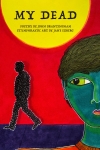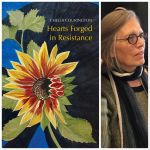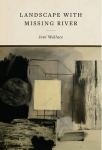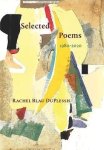
Bob Hicok has always had a serious side, with some of his poems dealing with topics such as racism, sexual abuse and puberty, but I don’t think I am alone in mostly seeing his writing as playful, sometimes smartarse, digressionary storytelling, poetry that has a relation to work by the likes of Dean Young and Josh Bell. Hicok’s work has always been thought-provoking and full of startling phrases and ideas, and although Water Look Away is no exception, it is also an incredibly dark and raw sequence of poems about a failed marriage.
The book starts with a jolt for the reader: ‘Welcome Home’ not only tells us how the husband finds his wife’s body hanging in the basement but that he is ‘Jealous she got. / There first.’ We already have a despairing couple at breaking point, well one of the couple, but like a murder mystery the poems now backtrack and rewind from this event to try and voice, explain, understand what is and has been going on.
Hicok’s poems here are pared back and sometimes brutal. In ‘Last Days of Rome’, ‘She lights matches to see the thoughts / of gasoline’, an ominous incendiary phrase at best. ‘The Opening’ explores ‘the music of conviction’ and asks ‘What if the past never wanted me’ before its downbeat conclusion:
King
of what? Holding a barrel
to his temple but not being able to finish
the thought? I never told God
I was sorry for being sorry
the world exists. I assumed God feels
the same way too.
We do not get to find out what God thinks. Instead, we spiral and zigzag back into this doomed relationship: text messages, affairs (‘Her affair was first / a sail raised on a mast / and then the storm / that broke the sail in two’), emotions, lust, ambition and expectations, broken childhoods and families, even confused marriage vows:
Marriage
Do you take
(no
give.) Do
you give
(no
hold.) Do
you hold
(no
river.) Do
you river
(yes I river
this man/woman
into/as
my breath.)
Whatever the causes or the effects, whatever the reason for despair and a brutal exit trajectory, there are also tender memories, frozen moments, passion, indeed love, as well as confusion, despair and deceit. There is a sense of delusional melodrama (from the male narrator, not Hicok) in declamations such as ‘The ash of my hand / will hold the bones of yours’ and there is also an element of self-pity, such as here, the ending of ‘Gone’:
Have we met? No.
I have me confused
with someone else.
But there is also a hint of healing and some kind of acceptance. ‘Used Book, Omen’ moves from a stabbed book of Ovid used as a writing prompt to:
A crimson shadow, healing by better compliment,
garments a women in wonder and sorrow.
A crimson woman, in garments of wonder and sorrw,
compliments the earth.
A gone woman, a crimson sorrow, a serpent shadow,
comrades: my garments of torture.
Woman gone: shadow torture. Then stood morning,
a healing garment of better wonder.
This is a raw, relentless book, whose characters ache and hurt, have been driven to emotional violence and infidelity, whose marriage has been ended by the twitch of a extension cord and a bruised throat. It is an elegy, a sad song, an accusation and a confession, a final ‘Goodnight goodnight goodnight goodnight.’ It is evidence that ‘That’s all there is. / That’s all there is.’
Rupert Loydell 25th April 2024









